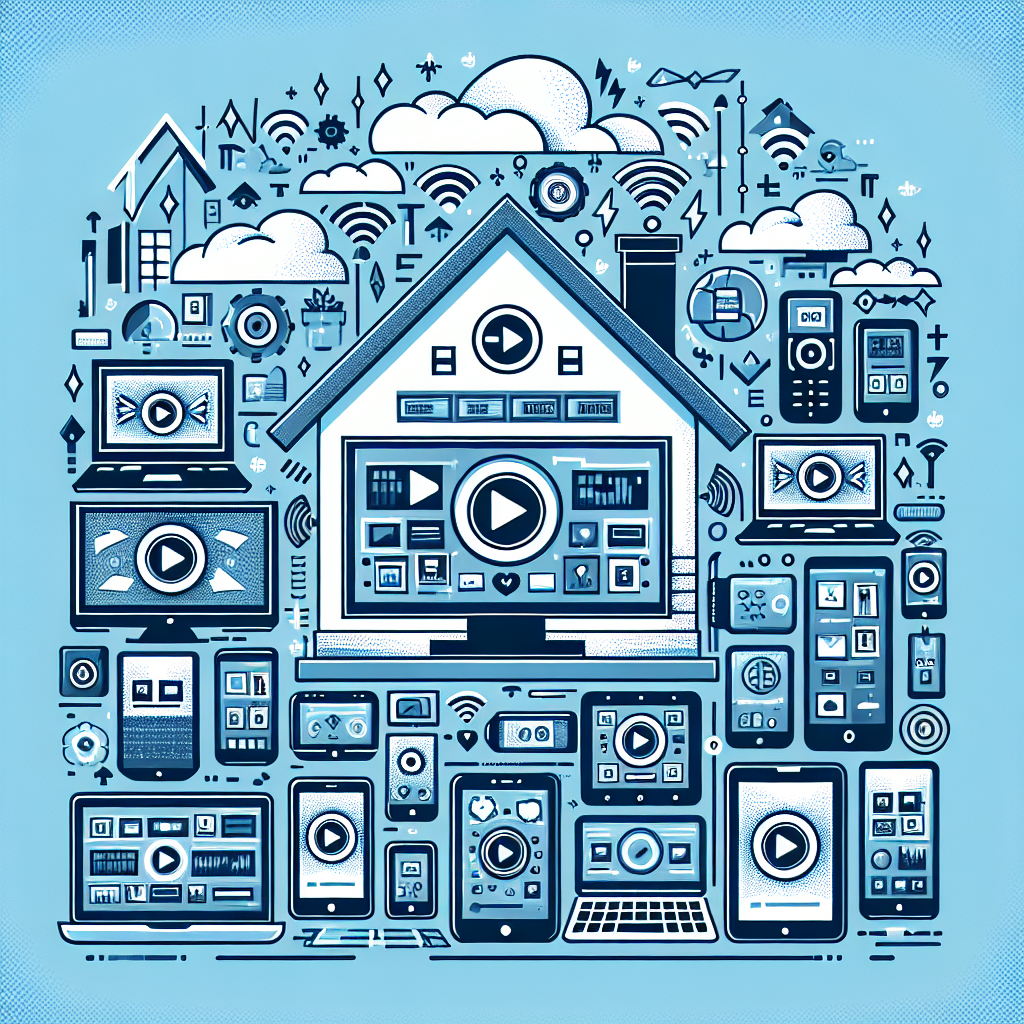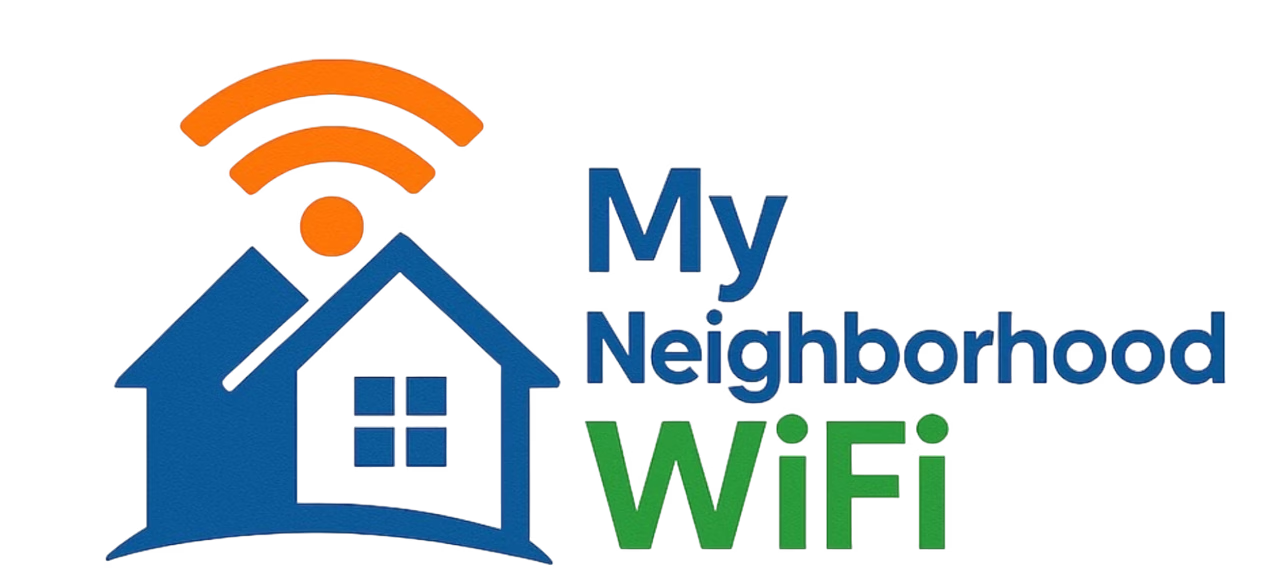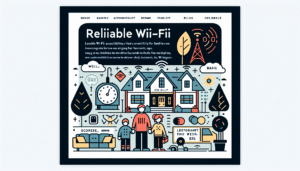
Best Internet Providers for Seamless Streaming and Connectivity in Multi Device Homes
When it comes to modern households, staying connected isn’t just about browsing anymore—it’s about running multiple devices at once. From smart TVs and gaming consoles to laptops, security cameras, and voice assistants, multi-device homes demand fast, reliable internet. Choosing the best internet providers for seamless streaming and connectivity in multi-device homes can make a huge difference in keeping your family connected without buffering, lag, or dropped video calls.
Why Strong Internet Matters in Multi-Device Homes
Think about how many devices you use daily. It’s not just smartphones and computers anymore. A family of four might easily have more than 15 devices connected at once! If your internet can’t handle that load, you’ll notice buffering on Netflix, slow downloads on laptops, and dropped Wi-Fi signals on smart speakers. That’s why it’s essential to pick an internet plan and provider that prioritizes strong speeds, robust connectivity, and consistent reliability.
Key Features to Look for in an Internet Service
- High download speeds – Crucial for streaming ultra HD content without interruptions.
- Fast upload speeds – Important for video conferencing, uploading content, and online gaming.
- Low latency – Especially important when gaming or video calling.
- No data caps – Prevents throttling during heavy usage months.
- Robust Wi-Fi solutions – Strong signal coverage across large or multi-level homes.
Challenges in Multi-Device Homes
While high speed is important, the real challenge is ensuring quality connectivity across multiple streams of activity. Here are some common issues families face:
Buffering During Streaming
Ever tried watching your favorite show while another person is gaming online? Buffering issues often come from network congestion when multiple devices fight for bandwidth.
Lag in Online Gaming
Gamers need a smooth, fast connection. Even slight delays can ruin online play, and lag often occurs in environments where too many devices share the same connection.
Weak Coverage in Large Homes
Wi-Fi struggles in multi-level or large houses. Thick walls or long distances from the router can cause dead zones, leading to frustrating disconnects.
Technology That Helps
Luckily, a range of technologies can help modern homes stay connected.
- Mesh Wi-Fi Systems – Multiple nodes placed across your home that deliver consistent Wi-Fi everywhere. (Learn more about Mesh networking)
- Ethernet Backhaul – Running wired connections between devices for maximum performance.
- Dual-Band and Tri-Band Routers – Allow devices to spread across different frequency channels so they don’t overload one single lane.
Best Internet Providers for Multi-Device Streaming
When evaluating the best providers for multi-device homes, ratings are based on speed options, consistency, and ability to support streaming, gaming, and smart home gadgets all at once. While we won’t mention providers you’re already overwhelmed with, here’s a breakdown of reliable connection features to consider.
| Provider Type | Best For | What to Expect |
|---|---|---|
| Fiber Internet | Ultra-HD streaming & gaming | Super-fast uploads/downloads with minimal lag |
| Cable Internet | Large households | High speeds but may experience slowdowns during peak hours |
| DSL Internet | Budget users | Decent speeds in smaller households, not ideal for 10+ devices |
| Fixed Wireless | Rural areas | Fills gaps where wired internet isn’t available |
Streaming Without Buffering
The biggest factor for streaming is bandwidth. For HD streaming, services recommend at least 5 Mbps per device, while 4K requires much more bandwidth. If you have 5 people in the house, all watching and gaming simultaneously, that can easily demand 100 Mbps or more to keep things smooth.
To avoid interruptions:
- Schedule larger downloads (like games or movies) overnight.
- Prioritize video calls and streaming during high-demand periods.
- Upgrade your router to handle multiple devices without strain.
Video Conferencing in Multi-Device Environments
With more remote work and online classes, seamless video conferencing is critical. Upload speeds are often overlooked, but they play a massive role in video quality. A strong provider will balance both download and upload speeds effectively so your calls stay crystal clear.
Tips for Smart Homes with Many Devices
- Use Wired Ethernet for devices that require stability (like gaming consoles and PCs).
- Separate devices into guest networks—keeping smart home devices on one channel and personal devices on another.
- Upgrade to Wi-Fi 6, which is specifically designed to manage multiple connections better.
How to Maximize Your Connection
Even with the best internet plan, you can take steps at home to get the best out of it:
- Place your router in the center of the home, away from thick walls.
- Use mesh Wi-Fi if you live in multi-level housing.
- Limit background apps and auto-updates during streaming and gaming hours.
- Check your speed regularly with a reliable tool like this video guide on running speed tests.
Future of Internet for Families
As more devices enter households, the demand for stronger, faster internet will only grow. Families will continue to rely on fiber and advanced Wi-Fi networks to stay connected across multiple gadgets. Providers are also scaling up speed tiers and offering plans specifically geared toward households relying heavily on streaming and smart technology.
Final Word on Internet Providers for Multi-Device Homes
The best internet providers for seamless streaming and connectivity in multi-device homes will depend on the kind of speeds and reliability your household needs. If you’re juggling multiple gamers, movie watchers, and work-from-home setups, fiber or advanced cable solutions will give you the best performance. With an upgraded router setup, mesh Wi-Fi, and careful device management, you can finally say goodbye to buffering and lag—for good.
“Most inquiries are answered within the same day”
Written by admin
Content writer and tech enthusiast sharing insights on internet connectivity.



